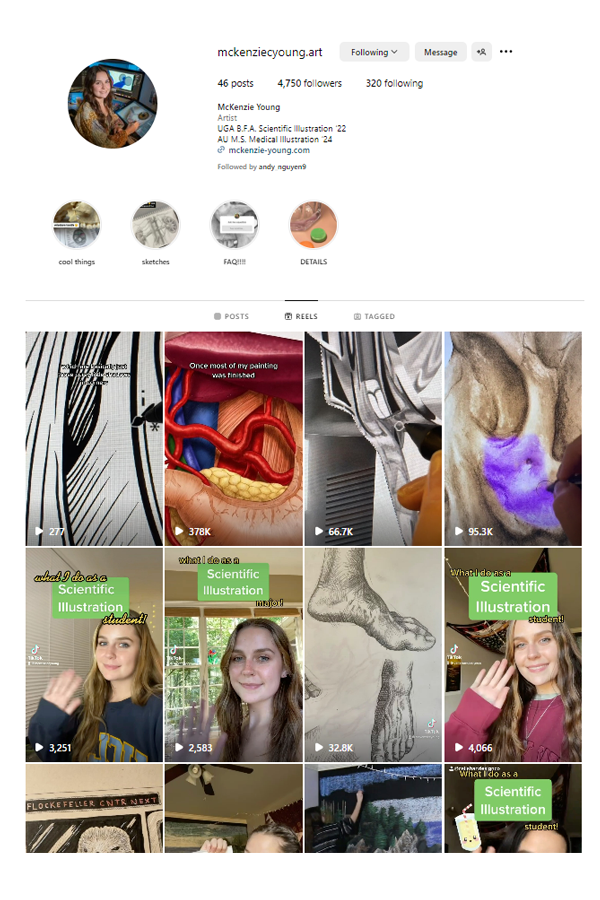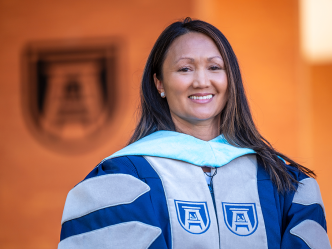McKenzie Young has always had an interest in both art and science.
Growing up, she loved painting and drawing, but she wasn’t one to be stuck inside. She also enjoyed exploring her backyard and the nearby woods, looking for insects and plants.
“As I got older, I realized art is something I really wanted to do for a living, but I wanted to still have the ability to keep learning and also indulge in other areas that I was interested in,” Young said.
“So, I found scientific illustration when I started my undergraduate degree, and I thought it was the perfect blend of everything that I loved. It was just the perfect combination for me.”
A balance of art and science
Young, who is graduating from Augusta University’s Master of Science in Medical Illustration program (MSMI) through the College of Allied Health Sciences and The Graduate School, began her undergraduate studies pursuing a degree in painting and drawing through the Lamar Dodd School of Art at the University of Georgia. But something felt off.
“I was leaning more into the art side of me, and I kind of felt like I was neglecting the scientific, curious side of me,” Young said.
That was when she met Gene Wright.
“I think at the end of the day, as long as I’ve managed to stay happy and fulfilled doing what I’m doing, I think that’s my ultimate goal, and that’s what I’ve always chased as I’ve figured out what I want to do.”
McKenzie Young
Wright, a 1990 alumnus of AU’s MSMI program, introduced her to the field of scientific illustration and was able to nudge Young in the direction of pursuing her master’s degree in medical illustration.
“It’s a very small field, but I feel like it encompasses everything that I’ve always been interested in, and the program that he has built at Georgia is kind of made to streamline the process to coming to the program here at AU,” Young said. “It feels like everyone in the field knows him the impact he has had on the field and directing students here to AU. He is definitely making a difference.”

As Young progressed through the program, she realized she had found the perfect career path for her interests. Amanda Behr, director of the MSMI program at AU, loves to use the term “lifelong learners” when describing medical and scientific illustrators, and before even meeting her, Young had already displayed that same passion.
The biggest draw for Young was the same as her mentors. She loved the idea of going to work every day not knowing what was in store for her and enjoys always learning more about science and medicine.
“It’s not a case of where I learned things in school and then go out and work and kind of just become stagnant working all the time. I’m always going to have to be learning new things about science and art to keep up in the field,” said Young.
Discovering an outlet for sharing her work
While she recalls always having a passion for traditional art and science from a young age, Young recalled that in middle school she took an interest in film and cinematography, particularly looking at the elements of telling a good visual story. So much so that she at one time considered going to college for film and cinematography.
“The whole reason I started on my TikTok is because I love making videos. I did YouTube in high school, and I used to want to go to college for film and cinematography,” she said.
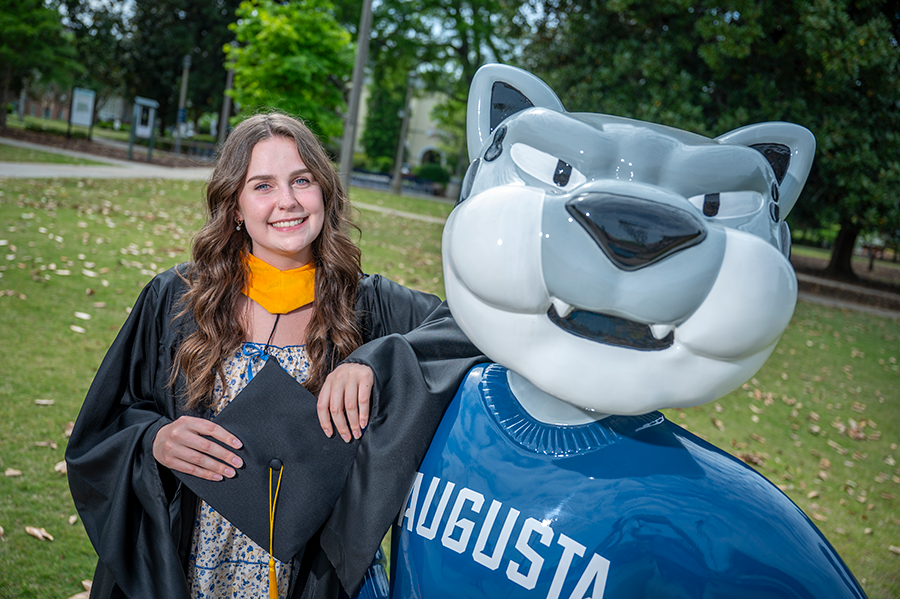
Those skills would ultimately serve her well as she began looking for a creative way to share her work and the process behind it, something that could complement a traditional portfolio while telling a good story.
“I kind of just thought of a way for me to show my artistic process in a way that wouldn’t be just a picture of my sketch and then a picture of my final product. I wanted to really tell the story of how the illustration came to be,” Young said. “So, I just started sharing those, and it kind of just took off because people love to see that process. It wasn’t something that they thought about on a regular basis, but they had always seen illustrations like the ones that I was making.”
Young found she had something interesting when she began posting behind-the-scenes and explainer videos about her projects to TikTok.
And the likes and follows began to take off.
“I feel like it’s a really special opportunity, and I feel very honored that I’m the one who’s at the forefront on social media of sharing it, which is kind of just the general public and helping them learn more about medical and scientific illustration because there are so many of us in the field that are creating amazing artwork,” said Young.
To date, Young’s TikTok account has over 104,200 followers and over 2.8 million likes. Five of her videos have over 1 million views each, including 2.7 million views for a video about how she illustrated a vasectomy, 1.6 million views on illustrating the anatomy of taste, and 1.2 million views about eye surgery.
Her Instagram page has over 6,000 followers, and four of her reels have amassed over 30,000 views each, including over 98,100 views and over 11,000 likes on a reel about one of her first projects illustrating a skull and over 400,000 views and 35,700 likes on a reel about illustrating organs.
“McKenzie is an advocate for our field, and through her videos, she shows the complexity of artistic rendering and the scientific knowledge behind each piece,” said Behr.
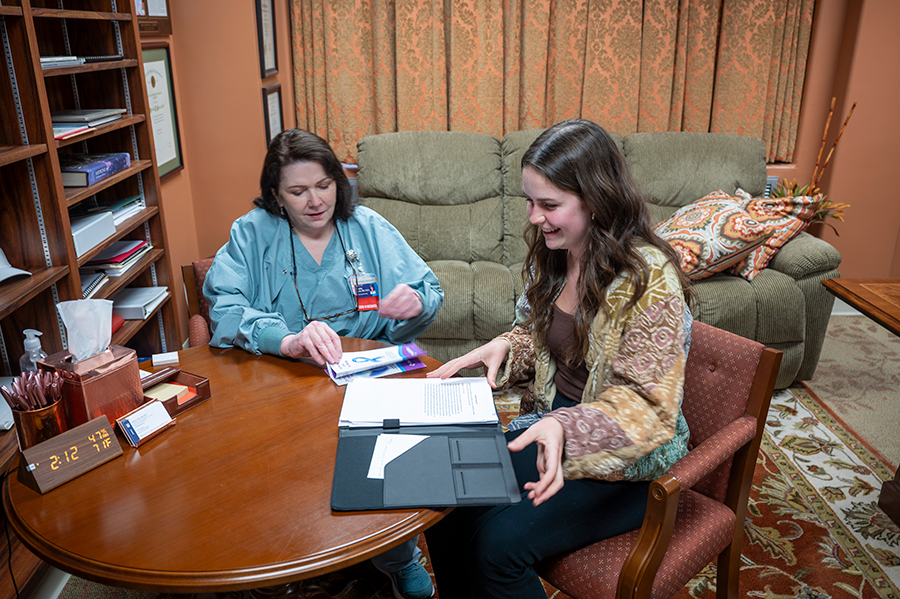
Making an impact
Being the face of an entire field comes with some added pressure. Young noted that many of the comments and messages she receives on her videos are centered around people wanting to learn more about how the illustrations on posters and in texts and scientific journals came to be.
“I try and handle things with a lot of grace and answer everyone’s questions because people are very, very curious, and love to ask questions about the process,” said Young. “It is really cool to help them understand, kind of how we do things.”
Young said most of the feedback she has received has been positive, even when she decided to take a break from posting for a while to focus on her mental health and getting over the finish line to graduation.
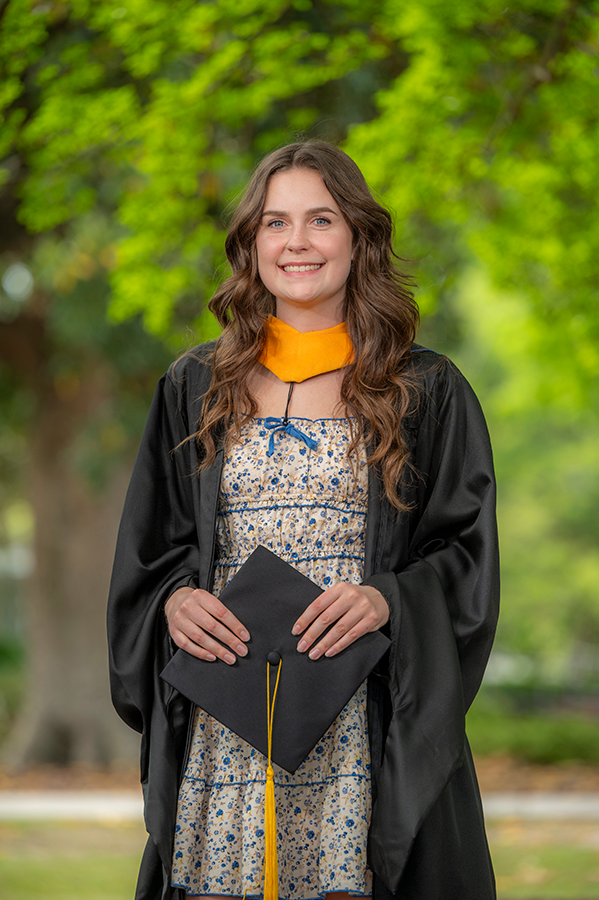
“Everyone was so positive and so encouraging when I came back and I posted a video recently after a few months of being away. I had people commenting, ‘Oh, you’re back. We missed you. Your progress is amazing.’ It warms my heart when I see things like that. I get tickled when I get those comments,” Young said.
On top of the encouragement for her own progress, her videos have had a broader impact by shining a brighter light on medical and scientific illustration and the possibilities for those who share her passion for art and science.
Similar to Wright, Young has become a recruiter for the field and program.
“I’ve actually had several people reach out to me on social media and say, ‘Hey, I just came across your page. I’ve always been interested in art and science, but I never knew kind of how to blend them together. And I’m really interested in going down this path,’” Young said.
“McKenzie is an advocate for our field, and through her videos, she shows the complexity of artistic rendering and the scientific knowledge behind each piece.”
Amanda Behr, director of the MSMI program at AU
And it’s leading to new students applying to the program at AU. Young learned during the current wave of applicants there were mentions of her videos being the inspiration for wanting to join the program.
“It’s amazing to see the impact McKenzie’s videos have had on our interview over the past two years. A number of applicants noted that McKenzie’s videos influenced their decision to apply to Augusta,” Behr said.
“We had more people apply to this program than usual and a few of them actually mentioned my TikTok in their interviews,” said Young. “It kind of is making a real difference in terms of getting people into the field, getting them excited about it and maybe considering it as a possibility for themselves. So that part’s really neat.”
Expanding her reach
On top of introducing her field to more people in an informative way, Young’s reach through her TikTok videos has also put her in front of some rather large brands, affording her the chance to do some campaigns for big names like Adobe and Niche.
“For Adobe, I put together some videos for them. It was like five videos in total, and I sent those off to them, and they used them in their own advertising on Snapchat, Instagram and YouTube. That was really cool.”
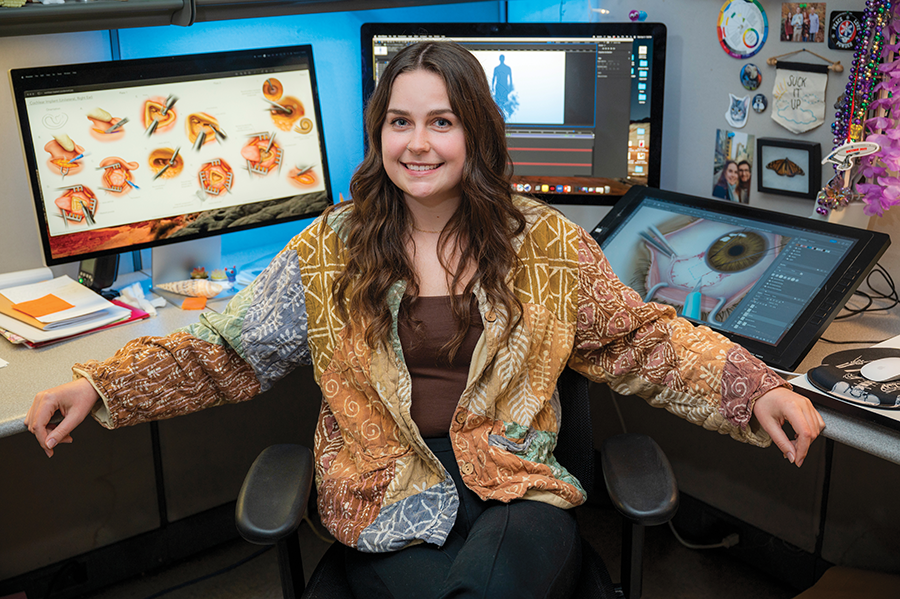
That is the kind of experience, on top of her abilities in art, science and to tell a story, that she is hoping will continue to open doors. She has even started to expand her reach to Instagram and YouTube.
While she hasn’t nailed down a job yet, she is hoping that her experiences with social media, medical and scientific illustration will lead to something, especially since a job in this space can be done remotely. And as has been the case since she first decided to blend her two passions, she’s not opposed to blending another.
“Being able to create for a living is my dream. Also, maybe owning my own business, whether it’s like a creative business or an illustration business. I’m really interested in entrepreneurship,” she sad. “I love to travel and so maybe living somewhere new and fun while I’m doing all of that, but I think at the end of the day, as long as I’ve managed to stay happy and fulfilled doing what I’m doing, I think that’s my ultimate goal, and that’s what I’ve always chased as I’ve figured out what I want to do. As long as I keep doing that, that’s my goal.”
 Augusta University
Augusta University

